It all starts with time in quarantine
We are finally on our way to carry out our 2022 austral fall/winter Antarctic cruise! Getting to Antarctica is never easy, but the pandemic has definitely made it more complicated. One aspect that we dealt with was quarantine. To keep covid infections out of the Antarctic field programs, we had to progress through a series of isolations. The first occured back at home in the 2 weeks prior to our travel where we avoided exposure risks – I’ll call it “quarantine adjacent” because we weren’t restricted from going about most of our daily activities.
Our real quarantine started about 3 weeks before we were scheduled to get on the ship in Punta Arenas, Chile. Everyone participating in this cruise traveled to San Francisco and checked into a hotel for 4 days. We weren’t allowed to leave our rooms at all, except for our covid test the day after we arrived, and to go out for a walk around the hotel parking lot for 30 minutes in the morning and 30 minutes in the afternoon (always wearing a mask and staying away from each other). Meals were delivered to our rooms. This was really strange because we weren’t able to reconnect with colleagues from prior deployments, or get to know the new people.
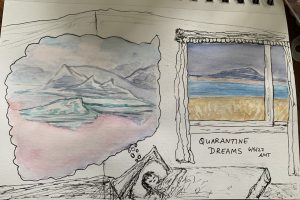
Artwork by Ann Tarrant as part of the blog fun!
We could only progress to the next phase of our quarantine if we tested negative, and fortunately we all did. I was one of a small number who tested ‘indeterminate’ and had to be retested. It was a tense wait for results, but I was obviously negative because I’m in Chile now. After a charter plane flight from San Francisco to Punta Arenas, we got on a bus and headed north 3 hours to the city of Puerto Natales where our cohort (those sailing on the Nathaniel B Palmer) checked into the Borde Glacier hotel for our 14 day stay. Again, we were confined to our rooms but had outdoor time twice a day. We had to wear masks and socially distance, but we were able to walk down the hill to the beach and walk around a hilly field next to the hotel (a 0.5 mile loop).
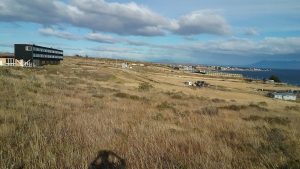
A view of the hotel from the adjacent hill.
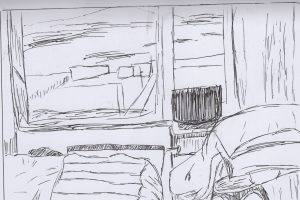
By SRS
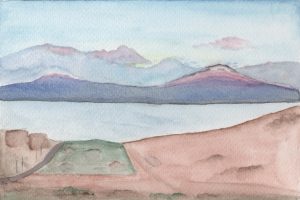
By M Cusolito

By E Lindberg
What do you do in confinement? I spent a lot of time working on data analysis and writing papers, but we also had multiple zoom training sessions, and 3 covid tests. Our rooms were very comfortable, and the view spectacular; the weather cooperated nicely, particularly during the second week. Even when it rained, it was still nice because we were treated to rainbows. There were a couple of local dogs who got a lot of attention from us, but the small group of horses near the field were not as friendly. There were lots of birds, particularly raptors, that we could watch through the room window, and we were treated to guanaco for lunch twice (it’s a local llama-like animal that is raised for meat; very dark in color, but tender and tasty).
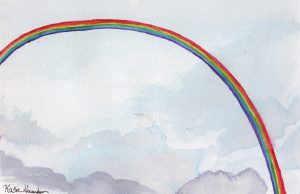
By K. Shanahan

By W Withrow

By E Martin
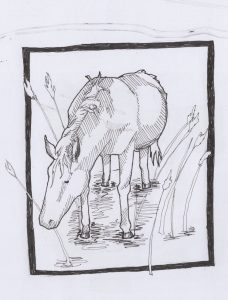
By N Furey
After 14 days, we all still tested negative, so we got back on a bus and headed for Punta Arenas to get onboard the ship. That is where I am now. We are still in quarantine as we are not allowed to leave the ship and must wear masks all the time (except when in our cabins), although we are allowed to move throughout the ship. Setup is going a bit slower than usual, but that’s not unexpected. The ship just came out of dry dock, so lots of things need to get located and put back in their places before we can go about setting up our lab spaces. We have started to do some of that, and are scheduled to depart on May 19 (pending negative results on our covid tests that were done today).
I have not been very active with my art projects. I thought I’d do more in quarantine than I actually got around to doing – I spent as much time outside as I could instead. But I collected some stones, shells and sea glass from the beach down the hill from our hotel and made a version of a Sailor’s Valentine. It was only temporary because I didn’t have any glue…
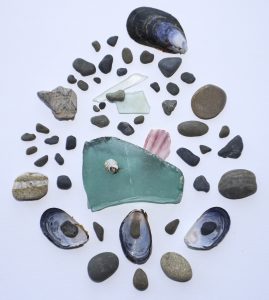
That’s all for now. I’ll write again once we set sail. This time we are leaving PA in the western direction rather than the east. Supposed to be a very beautiful trip before the messiness of the Drake Passage.